- Rising rates trigger technology selloff
- US dollar slides
- Bitcoin steadies
Key Events
Dow Jones futures were the only leading US benchmark trading higher on Wednesday—albeit barely—as the market eagerly awaits today's publication of the minutes from the US Federal Reserve's December policy meeting. Contracts on the S&P 500, NASDAQ and Russell 2000 have been fluctuating but trending lower after a selloff in Asia, while European shares have been mixed. Yesterday's tech rout on Wall Street made it to Asia this morning.
Gold continued its advance.
Global Financial Affairs
The current market narrative is confusing traders. One theme is that Omicron's mild symptoms have allowed investors to disregard the pandemic risk and refocus on a US Federal Reserve that continues to move forward on tightening. We've been surprised at how well the market has thus far accepted the central bank's hawkish tilt.
Another version of the narrative says investors are entrenched in positions even as the risks keep escalating with renewed COVID restrictions despite a "benign" variant and the sudden focus of rising interest rates.
We view these concerns as essentially contradictory. If investors are only concerned with monetary policy, they should invest in economically sensitive sectors. On the other hand, if they're also expecting a return to a stay-at-home environment, they would invest in big tech. But neither direction has been consistently occurring. We will continue monitoring to try and see an emerging trend.
Dow Jones contracts were fluctuating on Wednesday, between positive and negative territories. Futures on the NASDAQ 100 were more than 0.25% percent in the red, extending Monday's sharp declines on concerns that rising interest rates will render the priciest stocks even more expensive.
While the tech selloff didn't drag down European shares, markets there did run out of steam after back-to-back records. Still, the STOXX 600 Index edged higher, forcing a gain following the US and Asian selloffs.
The technology sector took a back seat, while autos, chemicals, and oil & gas—economically sensitive sectors—outperformed.
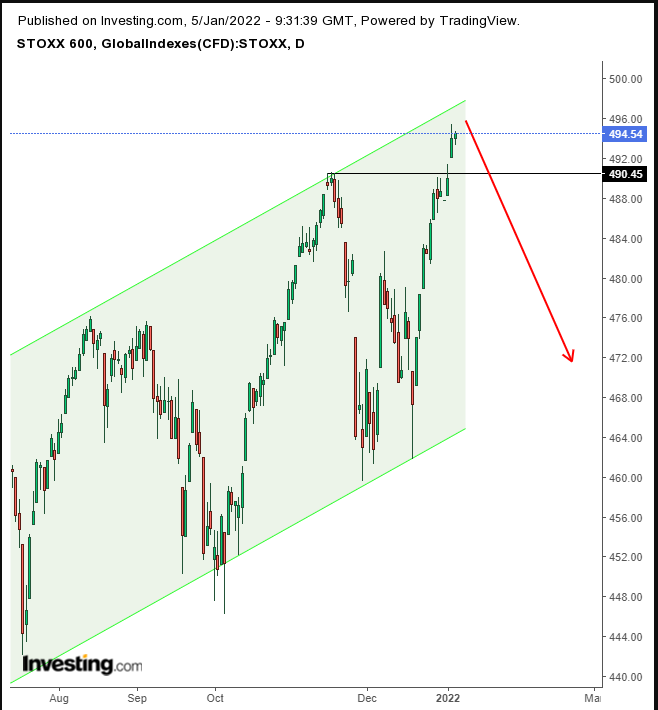
Though the European benchmark extended the uptrend when overcoming the November record, it is still below yesterday's intraday high.
This presumed resistance is meaningful when the index nears the top of its rising channel, another potential resistance, having reached the line where sellers have overcome demand since August. In other words, the benchmark could dip to the bottom of the rising channel while remaining in a rising trend.
Earlier Wednesday, Japan's Nikkei 225 inched up 0.1% and was the only major Asian benchmark to end in positive territory. Hong Kong's Hang Seng tumbled 1.64%, underperforming its regional peers, after the financial hub reimposed a lockdown, banning flights from eight countries. Chinese stocks listed in Hong Kong fell to a six-year low.
The 10-year Treasury yield pared a rally that neared March highs. These rising yields are likely behind the sudden investor-reawakening to the risk of rising rates, which have sent tech stocks into a spin.
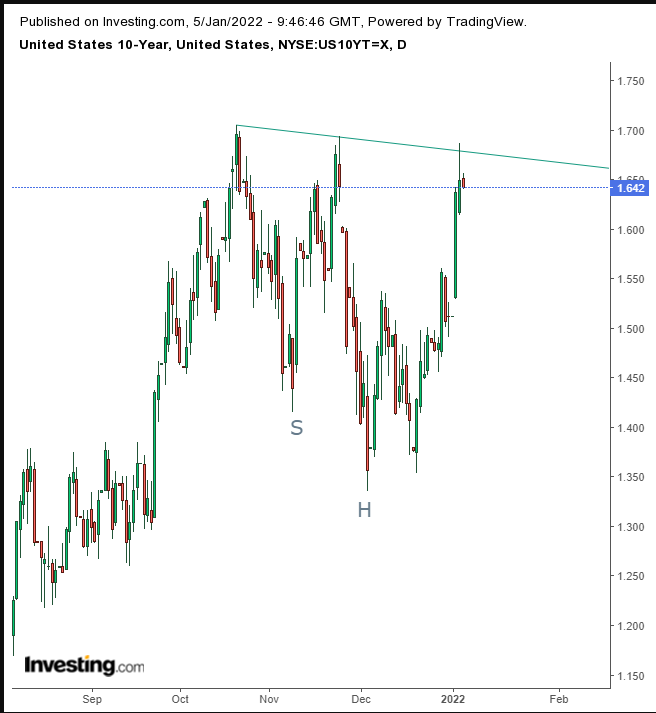
Are yields forming an H&S bottom?
The dollar dropped, ending a two-day advance.
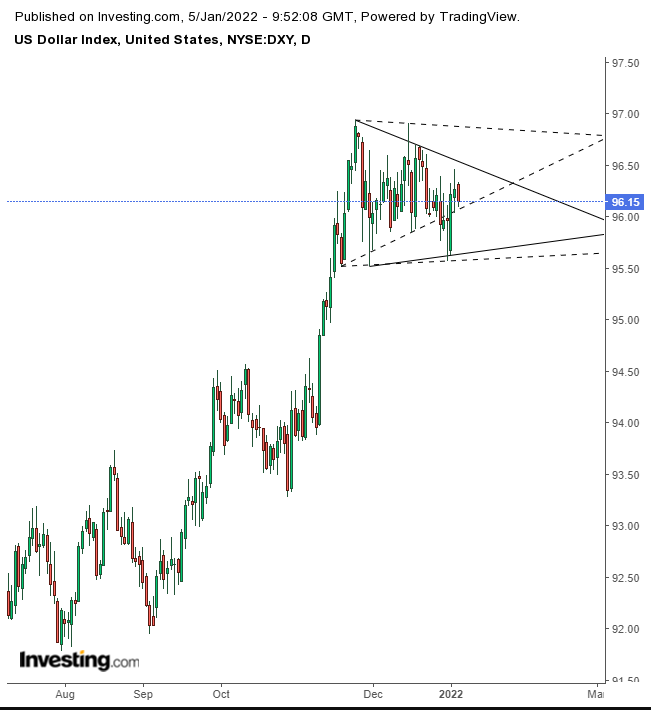
We've been trying to figure out the developing trading pattern for the greenback, as indicated by the dotted lines. As of now, our best guess is that we are witnessing a symmetrical triangle in the making, along with the solid converging lines. An upside breakout would signal a resumption of the underlying uptrend.
Gold rose for a second day. Yesterday's advance is noteworthy, given that the dollar strengthened simultaneously.
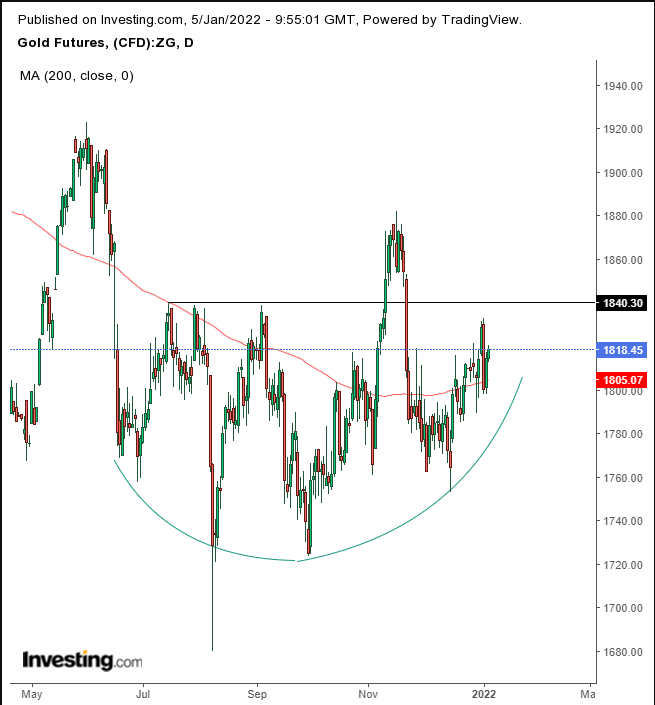
The yellow metal has been struggling with the 200 DMA to complete a rounding bottom.
Bitcoin bounced off the support of a month-long range.
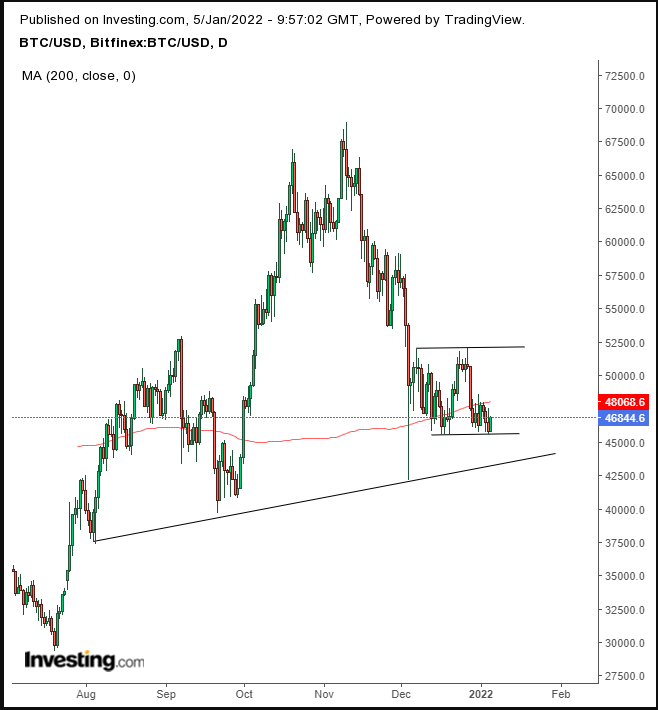
We're watching to see if this sideways move is forming an H&S's right shoulder.
Oil steadied after some volatility following an OPEC+ announcement of increasing production amid an improving economic outlook and therefore improved oil demand.
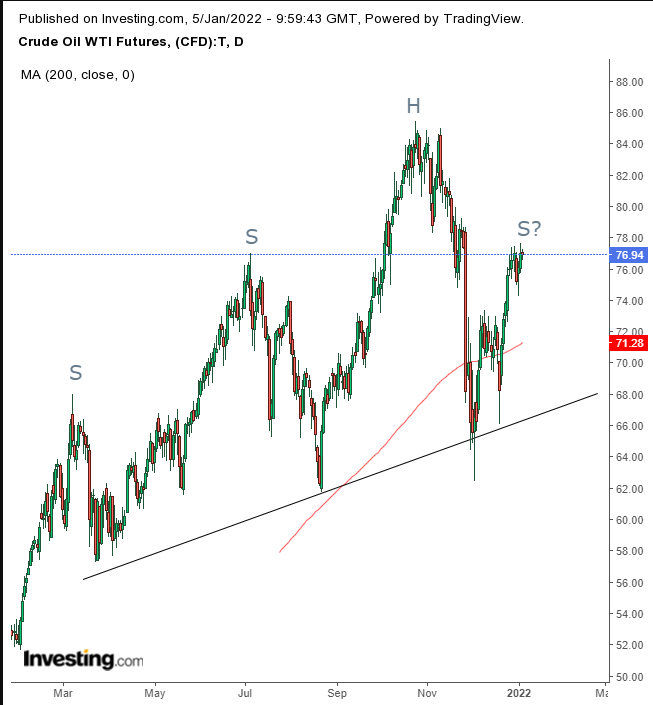
Unless WTI makes new highs, we're looking at a potential top.
Up Ahead
- On Thursday the UK Composite PMI is published.
- US initial jobless claims are released on Thursday.
- ISM non-manufacturing PMI is printed on Thursday.
Market Moves
Stocks
- The STOXX 600 was little changed as of 8:43 a.m. London time
- Futures on the S&P 500 fell 0.1%
- Futures on the NASDAQ 100 fell 0.3%
- Futures on the Dow Jones Industrial Average were little changed
- The MSCI Asia Pacific Index fell 0.4%
- The MSCI Emerging Markets Index fell 0.9%
Currencies
- The Bloomberg Dollar Spot Index fell 0.1%
- The euro rose 0.1% to $1.1302
- The Japanese yen fell 0.3% to 115.79 per dollar
- The offshore yuan was little changed at 6.3717 per dollar
- The British pound rose 0.1% to $1.3547
Bonds
- The yield on 10-year Treasuries was little changed at 1.64%
- Germany's 10-year yield was flat at -0.13%
- Britain's 10-year yield declined one basis point to 1.07%
Commodities
- Brent crude fell 0.4% to $79.69 a barrel
- Spot gold rose 0.2% to $1,817.37 an ounce
